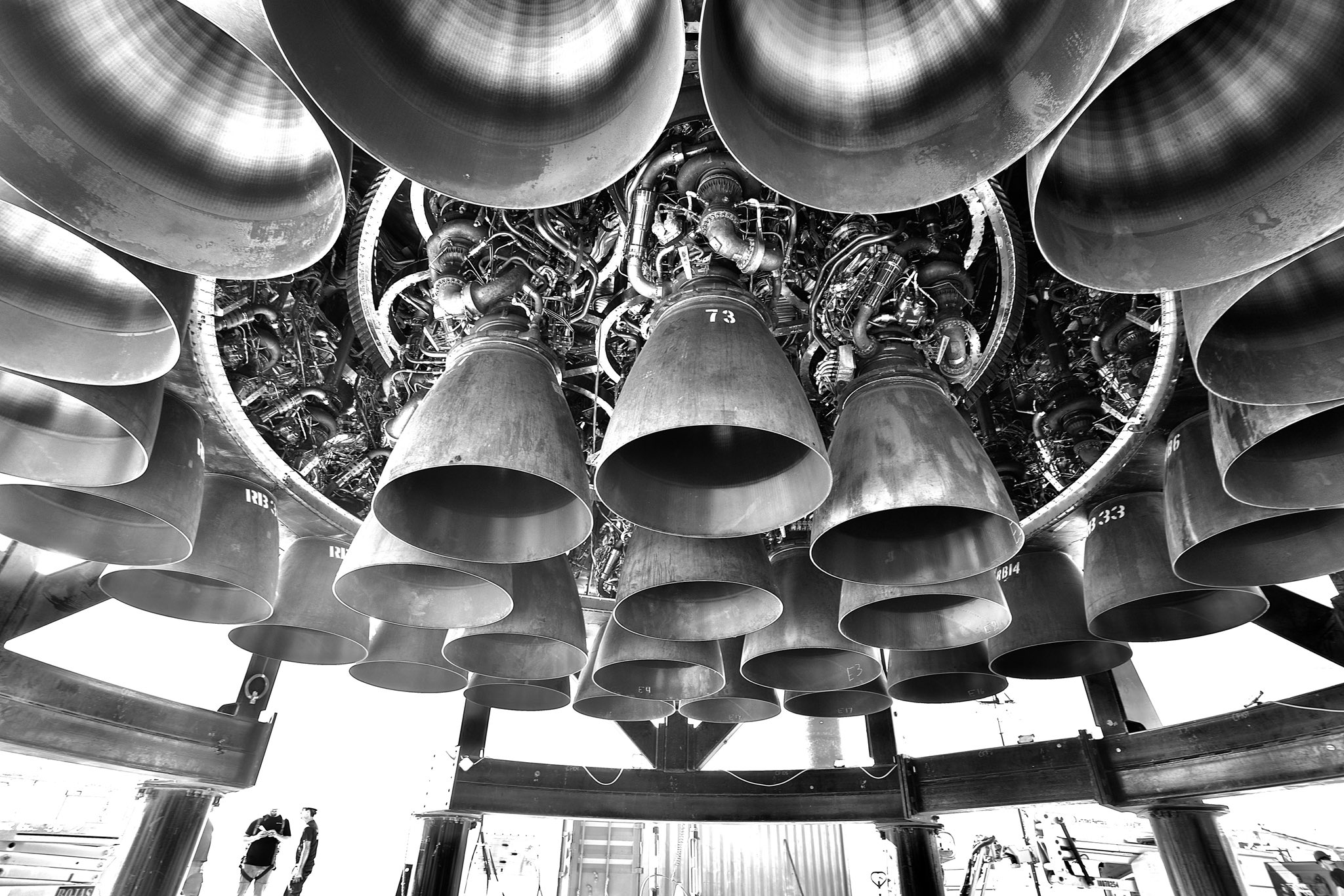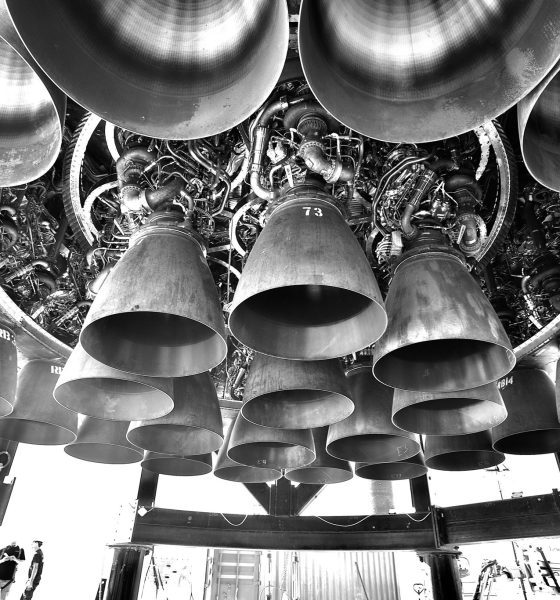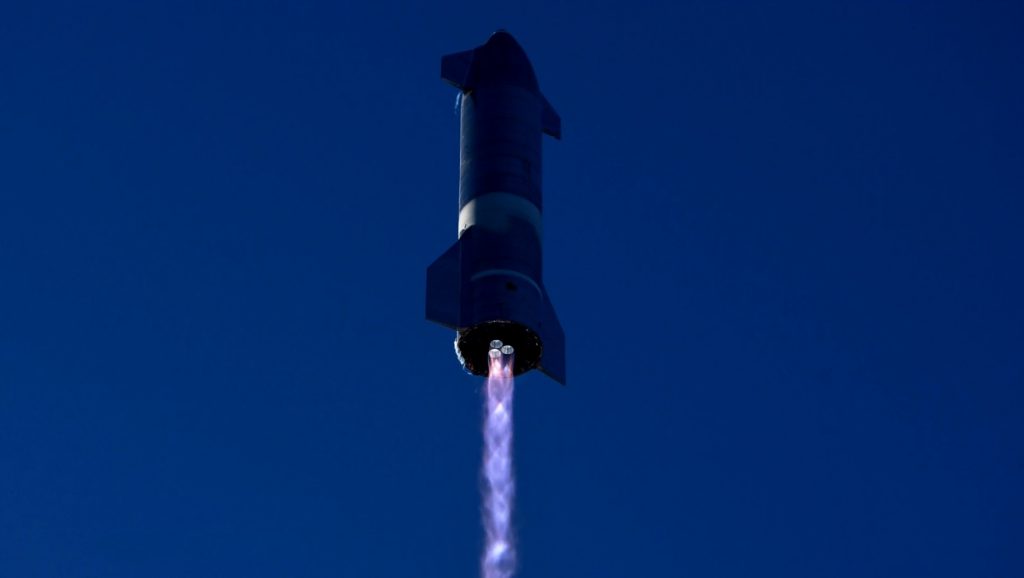

News
Elon Musk says SpaceX making good progress on Starship’s upgraded Raptor 2 engines
As is routine, SpaceX CEO Elon Musk has taken to Twitter to offer a few details about the status of Starship, its Raptor engines, and a few upgrades planned for both.
In mid-December, Musk revealed even more ambitious plans to upgrade Starship by stretching its propellant tanks and adding another three Raptor engines, potentially boosting the ship’s maximum thrust by 50% and substantially improving payload performance. These latest details are focused on an upgraded version of the Raptor engine and on additional changes to Starship’s structural design and assembly process.

According to Musk, as SpaceX continues to ramp up ground testing of the upgraded engine variant, “Raptor 2 now operates routinely at 300 bar main chamber pressure.” For context, on February 10th, 2019, just days after SpaceX began testing the first full-scale Raptor prototype ever completed, the engine briefly reached a main combustion chamber pressure just shy of 269 bar (3900 psi). That narrowly beat records set by Russia’s RD-270 and RD-180 engines, the latter of which is used on ULA’s Atlas V.
It took 18 months before Musk revealed clear proof that at least one Raptor prototype sustained such high chamber pressures over a minute or more of steady-state operations. The same engine peaked at an impressive 330 bar (~4800 psi), briefly producing 225 tons (~500,000 lb) of thrust and soundly beating out Russia’s never flown RD-701 engine, which crested 290-300 bar in testing. Another ~18 months after that milestone, Raptor isn’t quite operational in the sense of supporting orbital-class launches but the engine isn’t far from its first and has since supported dozens of Starship static fires and seven flight tests – five of which occurred in a period of just six months.
Already, despite the fact that Raptor 1 or 1.5 engines have yet to even attempt an orbital-class launch, SpaceX has almost entirely moved on to a new and improved variant known as Raptor 2. According to Musk, all Raptor ground testing at the company’s McGregor, Texas development campus is now focused on the new hardware, which reportedly features much cleaner plumbing and wiring. The biggest change to Raptor 2, though, is an almost 25% increase in maximum nominal thrust over Raptor 1/1.5 – from around 185 to 230 tons (408,000-507,000 lbf). That’s partially enabled by widening the ‘throat’ of Raptor’s nozzle, which sacrifices a small amount of efficiency for more power density. However, Raptor 2 also contains design improvements throughout to enable sustained, reliable operation at chamber pressures up to 300 bar – 10% higher than Raptor 1.5.
On October 24th, Musk subtly live-tweeted one of the first Raptor 2 static fires, revealing that the engine reached a chamber pressure of 321 bar (~4650 psi) and briefly produced around 245 tons (~540,000 lbf) of thrust before destroying itself. Now, a little over two months later, Musk says that Raptor 2 prototypes are routinely operating at 300 bar without major issues, meaning that they can ignite and safely shut down after burning for several minutes at those pressures. In theory, given that 300 bar is Raptor 2’s targeted chamber pressure at max thrust, that means that the engine is now “routinely” operating at the level SpaceX wants and needs to take Starship to the next level.
It’s likely that one or several months of work remain before SpaceX can begin qualifying the first Raptor 2 engines (or, more importantly, hypothetical Raptor 2 Vacuum or Boost variants) for the first Starship or Super Heavy prototypes designed for the new engine. Nonetheless, the rapid progress SpaceX has made in the first few months of Raptor 2 testing is extremely encouraging.

News
Tesla (TSLA) receives “Buy” rating and $551 PT from Canaccord Genuity
He also maintained a “Buy” rating for TSLA stock over the company’s improving long-term outlook, which is driven by autonomy and robotics.

Canaccord Genuity analyst George Gianarikas raised his Tesla (NASDAQ:TSLA) price target from $482 to $551. He also maintained a “Buy” rating for TSLA stock over the company’s improving long-term outlook, which is driven by autonomy and robotics.
The analyst’s updated note
Gianarikas lowered his 4Q25 delivery estimates but pointed to several positive factors in the Tesla story. He noted that EV adoption in emerging markets is gaining pace, and progress in FSD and the Robotaxi rollout in 2026 represent major upside drivers. Further progress in the Optimus program next year could also add more momentum for the electric vehicle maker.
“Overall, yes, 4Q25 delivery expectations are being revised lower. However, the reset in the US EV market is laying the groundwork for a more durable and attractive long-term demand environment.
“At the same time, EV penetration in emerging markets is accelerating, reinforcing Tesla’s potential multi‑year growth runway beyond the US. Global progress in FSD and the anticipated rollout of a larger robotaxi fleet in 2026 are increasingly important components of the Tesla equity story and could provide sentiment tailwinds,” the analyst wrote.
Tesla’s busy 2026
The upcoming year would be a busy one for Tesla, considering the company’s plans and targets. The autonomous two-seat Cybercab has been confirmed to start production sometime in Q2 2026, as per Elon Musk during the 2025 Annual Shareholder Meeting.
Apart from this, Tesla is also expected to unveil the next-generation Roadster on April 1, 2026. Tesla is also expected to start high-volume production of the Tesla Semi in Nevada next year.
Apart from vehicle launches, Tesla has expressed its intentions to significantly ramp the rollout of FSD to several regions worldwide, such as Europe. Plans are also underway to launch more Robotaxi networks in several more key areas across the United States.
News
Waymo sues Santa Monica over order to halt overnight charging sessions
In its complaint, Waymo argued that its self-driving cars’ operations do not constitute a public nuisance, and compliance with the city’s order would cause the company irreparable harm.

Waymo has filed a lawsuit against the City of Santa Monica in Los Angeles County Superior Court, seeking to block an order that requires the company to cease overnight charging at two facilities.
In its complaint, Waymo argued that its self-driving cars’ operations do not constitute a public nuisance, and compliance with the city’s order would cause the company irreparable harm.
Nuisance claims
As noted in a report from the Los Angeles Times, Waymo’s two charging sites at Euclid Street and Broadway have operated for about a year, supporting the company’s growing fleet with round-the-clock activity. Unfortunately, this has also resulted in residents in the area reportedly being unable to sleep due to incessant beeping from self-driving taxis that are moving in and out of the charging stations around the clock.
Frustrated residents have protested against the Waymos by blocking the vehicles’ paths, placing cones, and “stacking” cars to create backups. This has also resulted in multiple calls to the police.
Last month, the city issued an order to Waymo and its charging partner, Voltera, to cease overnight operations at the charging locations, stating that the self-driving vehicles’ activities at night were a public nuisance. A December 15 meeting yielded no agreement on mitigations like software rerouting. Waymo proposed changes, but the city reportedly insisted that nothing would satisfy the irate residents.
“We are disappointed that the City has chosen an adversarial path over a collaborative one. The City’s position has been to insist that no actions taken or proposed by Waymo would satisfy the complaining neighbors and therefore must be deemed insufficient,” a Waymo spokesperson stated.
Waymo pushes back
In its legal complaint, Waymo stated that its “activities at the Broadway Facilities do not constitute a public nuisance.” The company also noted that it “faces imminent and irreparable harm to its operations, employees, and customers” from the city’s order. The suit also stated that the city was fully aware that the Voltera charging sites would be operating around the clock to support Waymo’s self-driving taxis.
The company highlighted over one million trips in Santa Monica since launch, with more than 50,000 rides starting or ending there in November alone. Waymo also criticized the city for adopting a contentious strategy against businesses.
“The City of Santa Monica’s recent actions are inconsistent with its stated goal of attracting investment. At a time when the City faces a serious fiscal crisis, officials are choosing to obstruct properly permitted investment rather than fostering a ‘ready for business’ environment,” Waymo stated.
News
Tesla FSD v14.2.2 is getting rave reviews from drivers
So far, early testers have reported buttery-smooth drives with confident performance, even at night or on twisty roads.

Tesla Full Self-Driving (Supervised) v14.2.2 is receiving positive reviews from owners, with several drivers praising the build’s lack of hesitation during lane changes and its smoother decision-making, among others.
The update, which started rolling out on Monday, also adds features like dynamic arrival pin adjustment. So far, early testers have reported buttery-smooth drives with confident performance, even at night or on twisty roads.
Owners highlight major improvements
Longtime Tesla owner and FSD user @BLKMDL3 shared a detailed 10-hour impression of FSD v14.2.2, noting that the system exhibited “zero lane change hesitation” and “extremely refined” lane choices. He praised Mad Max mode’s performance, stellar parking in locations including ticket dispensers, and impressive canyon runs even in dark conditions.
Fellow FSD user Dan Burkland reported an hour of FSD v14.2.2’s nighttime driving with “zero hesitations” and “buttery smooth” confidence reminiscent of Robotaxi rides in areas such as Austin, Texas. Veteran FSD user Whole Mars Catalog also demonstrated voice navigation via Grok, while Tesla owner Devin Olsen completed a nearly two-hour drive with FSD v14.2.2 in heavy traffic and rain with strong performance.
Closer to unsupervised
FSD has been receiving rave reviews, even from Tesla’s competitors. Xpeng CEO He Xiaopeng, for one, offered fresh praise for FSD v14.2 after visiting Silicon Valley. Following extended test drives of Tesla vehicles running the latest FSD software, He stated that the system has made major strides, reinforcing his view that Tesla’s approach to autonomy is indeed the proper path towards autonomy.
According to He, Tesla’s FSD has evolved from a smooth Level 2 advanced driver assistance system into what he described as a “near-Level 4” experience in terms of capabilities. While acknowledging that areas of improvement are still present, the Xpeng CEO stated that FSD’s current iteration significantly surpasses last year’s capabilities. He also reiterated his belief that Tesla’s strategy of using the same autonomous software and hardware architecture across private vehicles and robotaxis is the right long-term approach, as it would allow users to bypass intermediate autonomy stages and move closer to Level 4 functionality.








